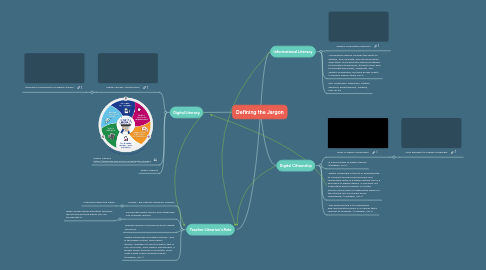Defining the Jargon
by Alana Brown


1. Digital Literacy
1.1. Digital Literacy: Introduction
1.1.1. Important Components of Digital Literacy
1.2. Digital Literacy https://www.hee.nhs.uk/our-work/digital-literacy
1.3. Digital Literacy
2. Teacher Librarian's Role
2.1. Google - Be Internet Awesome Program
2.1.1. Interland Interactive Game
2.2. Incorporate digital literacy and citizenship into everyday lessons
2.2.1. When collaborating with other teachers, discuss this and see where you can incorporate it
2.3. Teacher librarian's provide access to digital resources
2.4. "Digital citizenship and digital literacy--and, in the bigger picture, information literacy--whether it's print or digital, that is our curriculum," says Gwenn Marchesano, a middle school librarian in Plymouth, Mich. "That's what school librarians teach." (Maughan, 2017)
3. Informational Literacy
3.1. What is Information Literacy?
3.2. "Information literacy includes the ability to identify, find, evaluate, and use information effectively. From effective search strategies to evaluation techniques, students learn how to evaluate the quality, credibility, and validity of websites, and give proper credit." (Common Sense Media, 2017)
3.3. Key Vocabulary: plagiarism, citation, keyword, advertisement, credible, pop-up ad
4. Digital Citizenship
4.1. What is Digital Citizenship?
4.1.1. Nine Elements to Digital Citizenship
